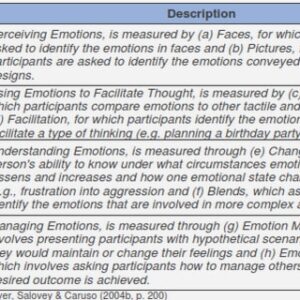(Downloads - 0)
For more info about our services contact : help@bestpfe.com
Table of contents
I. METEOROLOGICAL REGIME AND ISOTOPE COMPOSITION OF PRECIPITATION: REVIEW OF LITERATURE
I.1. Meteorological regime and precipitation formation in central Antarctica
I.1.1. Atmospheric circulation in the southern hemisphere
I.1.2. Surface temperature inversion at Vostok and wind regime
I.1.3. Precipitation and water vapor in central Antarctica
I.2. Isotope composition of precipitation and its relation to the conditions of formation: Theoretical considerations and empirical data
I.2.1. Theoretical basis of the relationship between isotope composition of precipitation and air temperature: Simple isotope models and GCMs
I.2.2. Empirical estimations of relationship between isotope composition of precipitation and temperature
Direct comparison of isotope composition and air temperature
Borehole thermometry
Use of melt layers
Correlation with snow accumulation rate
Data on gas inclusion
Isotope composition of trapped air
I.3. Factors influencing the relationship between snow isotope composition and surface air temperature
I.3.1. Moisture source conditions
I.3.2. Seasonality of precipitation
I.3.3. Microphysical conditions of precipitation formation
I.3.4. Difference between condensation and surface air temperature
I.3.5. Glaciological factors
I.3.6. Post-depositional processes
I.4. Conclusion of Chapter I
II. METHODS AND EXPERIMENTAL DATA
II.1. Experimental data
II.1.1. Meteorological data
II.1.2. Balloon-sounding data
II.1.3. Snow accumulation rate
II.1.4. Isotope composition of snow
II.2. Field works
II.2.1. Stratigraphic studies in pits
II.2.2. Snow sampling in pits
II.2.3. Sampling of precipitating and blowing snow
II.2.4. Construction of new snow accumulation-stake network
II.2.5. Snow surface leveling
II.3. Laboratory measurements
II.3.1. Isotope measurements
II.3.2. Measurements of beta-radioactivity
II.3.3. Measurements of liquid conductivity
II.4. Conclusion of Chapter II
III. METEOROLOGICAL CONDITIONS OF SNOW FORMATION
III.1. Contribution of different precipitation types in total precipitation amount
III.2. Temperature of condensation
III.3. Conclusion of Chapter III
IV. SPATIAL VARIABILITY OF SNOW ISOTOPE COMPOSITION: PLAYGROUND OF WIND
IV.1. Mega-dunes and micro-relief
IV.2. « Meso-dunes » signature in spatial and temporal series of snow build-up
IV.3. Relief-related oscillations in temporal isotope series Post-depositional changes of snow δD content in the past
IV.4. Conclusion of Chapter IV
V. MODERN TEMPORAL VARIABILITY OF SNOW ISOTOPE COMPOSITION
V.1. Seasonal variability of isotope composition of precipitation
V.2. Temporal variability of isotope composition and snow accumulation rate in the vicinity of Vostok Station over the last 50 years
V.3. The deuterium content – temperature slopes
V.4. Short-term variations of isotope composition in deep ice cores from Vostok
V.5. Conclusion of Chapter V
VI. CHANGES IN TEMPERATURE AND SNOW ACCUMULATION RATE AT VOSTOK STATION OVER THE PAST 200 YEARS
VI.1. Series of isotope composition and snow accumulation rate from deep pits
VI.2. 50-year cycle in changes of accumulation and isotope composition:
A teleconnection between central Antarctica and tropical Pacific?
VI.3. Secular trends of accumulation and isotopes at Vostok: Climate or mega-dunes?
VI.4. 200-year accumulation and isotope tendencies at other East Antarctic sites
VI.5. Conclusion of Chapter V
CONCLUSION AND PERSPECTIVES
REFERENCES


